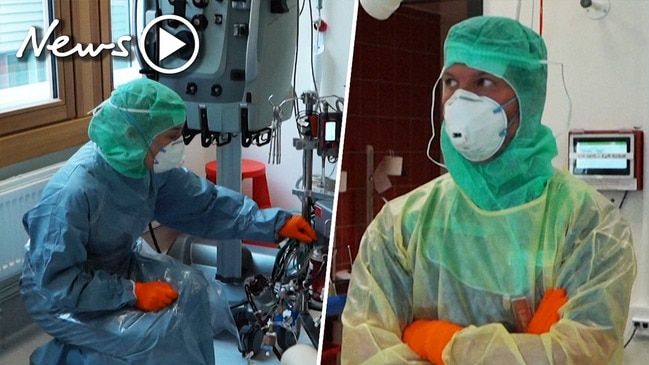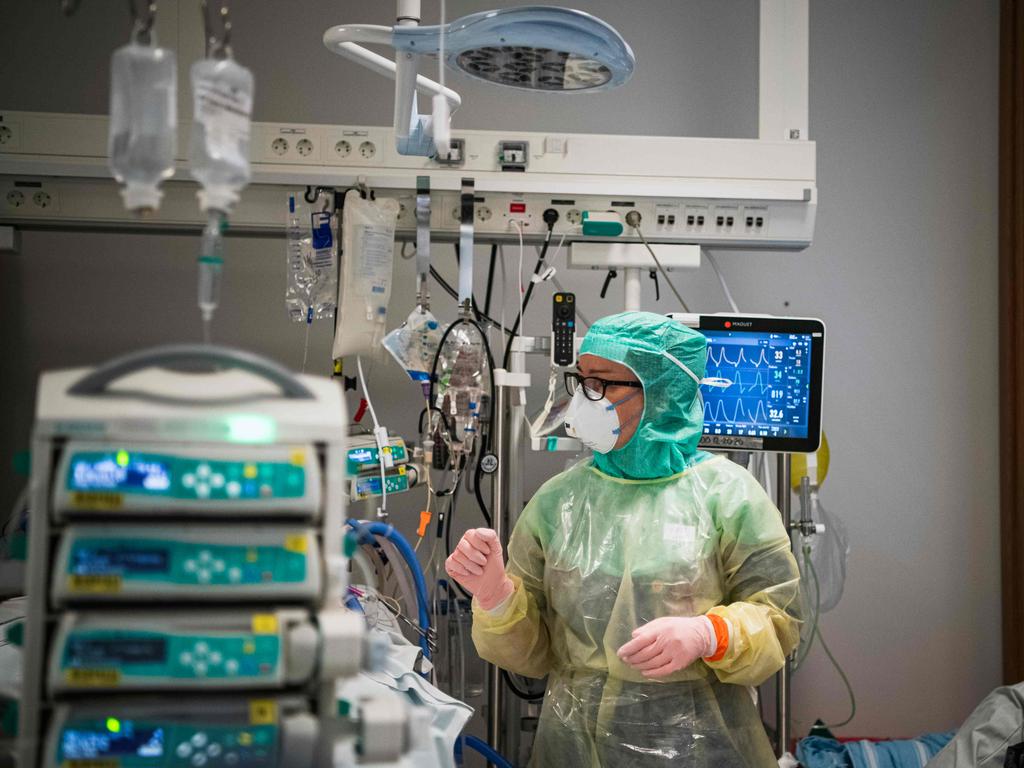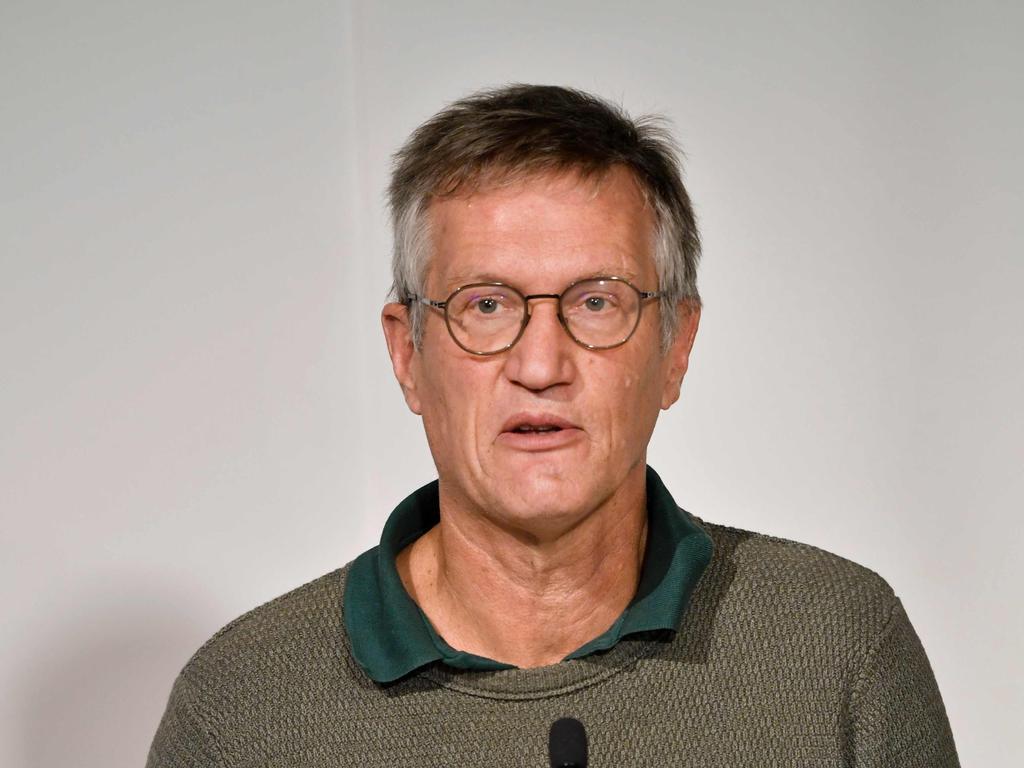Swedish approach to fighting COVID-19 takes a turn as cases spike
Coronavirus cases have doubled in Sweden in just three weeks as the wheels fall off the country’s vaunted approach to tackling COVID-19.

Coronavirus cases have exploded in Sweden as authorities try to keep hold of twin battles – containing the virus and controlling the narrative.
The breakaway Nordic nation divided experts by refusing to lock down its citizens when the virus swept through the country earlier this year.
But a devastating second wave has forced a dramatic rethink as infections threaten to derail any gains that were achieved by taking a now notoriously relaxed approach to the pandemic.
Regions have been effectively locked down to contain a doubling of COVID-19 cases in just three weeks.
David Steadson, an Australian former public health researcher now living in Sweden, told news.com.au the region where he lives is experiencing a disturbing rate of new infections.
Sweden update, new cases -
— David Steadson 🇦🇺🇸🇪🇪🇺🌠(@DavidSteadson) October 20, 2020
Week 39 2919
Week 40 3640
Week 41 4280
Week 42 5627
That's a 93% increase in cases in 3 weeks. pic.twitter.com/Mt9Ekvplsl
“Sweden has now seen a doubling in cases in three weeks, hitting more than 1000 new cases in one day for the first time since June,” he said.
“Hospitalisation and ICU numbers are also starting to increase.”
He said Uppsala, north of Stockholm, where he and his family live, has seen more than double the total number of infections in the last two weeks, forcing authorities to introduce new restrictions.
“While most Swedes won’t call it lockdown, the key takeaway is, where possible, to avoid all contact with people outside your own family.
“(Authorities are) explicitly stating not to have social events and work from home if at all possible.”
Time magazine reports that Sweden’s per-capita death rate as of last week was 58.6 per 100,000 people and that average daily cases rose by 173 per cent from early September to early October “with particularly dramatic increases in cities such as Stockholm and Uppsala”.
The Washington Post reports that Sweden’s cumulative death total from infections is 10 times higher than neighbouring Norway and Finland and five times higher than Denmark.
RELATED: How Europe’s second wave will hit Aussie economy

RELATED: Europe passes 100,000 new daily cases
“Registered cases in Sweden are slightly above 106,300, compared with around 13,800 in Finland and 16,600 in Norway – each with about half the population of Sweden,” the Post reports.
And the UK Times reports that new cases each day have risen on average from 160 in September to almost 700 in October.
Mr Steadson, who used to work for the University of Queensland, says the Swedish government is looking at changing the law – “and if necessary the constitution” – to make requirements “law” rather than expect the population to do the right thing voluntarily.
“They expect it will take months to do, so it’s in anticipation of future crises and won’t be ready until next summer,” he said.
Sweden’s chief epidemiologist Anders Tegnell is reportedly travelling to regions impacted by COVID-19 to discuss their respective lockdown measures.
He told the public broadcaster: “If they don’t seem to have an effect … then of course we need to consider other ways to constrain these opportunities for transmission.”
Dr Tegnell, who has achieved a cult status in Sweden, has rarely swayed from his position.
He told New Statesman in April that “locking people up at home won’t work in the longer term”.
RELATED: Further lockdown measures in UK to stop virus spike

RELATED: Europe in crisis as case numbers surge
“Sooner or later, people are going to go out anyway,” he said. “I want to make it clear, no, we did not lock down like many other countries, but we definitely had a virtual lockdown.”
He said Swedes “changed their behaviour enormously” and did so without laws needing to be enforced as they are in other countries including Australia.
“We stopped travelling even more than our neighbouring countries. The airports had no flights anywhere, the trains were running at a few per cent of normal service, so there were enormous changes in society.”
But Mr Steadson, who caught COVID-19 in March and is still suffering from a range of symptoms, including difficulty breathing, said the goal for Sweden was to achieve “herd immunity”, which, as a scientist, made no sense to him.
“Allowing a deadly virus to just spread in the hope of eventual ‘herd immunity’ made no sense to me scientifically, given our then limited knowledge, and it absolutely made no sense to me ethically,” he told news.com.au earlier this year.
“People would die unnecessarily and I was frankly disgusted with what I was hearing from the Swedish Public Health Authority.”
Dr Nick Talley, editor-in-chief of the Medical Journal of Australia, agreed that Sweden got it wrong.
“In my view, the Swedish model has not been a success, at least to date,” he told news.com.au.
“One clear goal at least early on was to reach herd immunity – but this was not achieved, not even close, and this was arguably predictable.
“There were restrictions put in place but the philosophy was voluntary rather than compulsory.”




